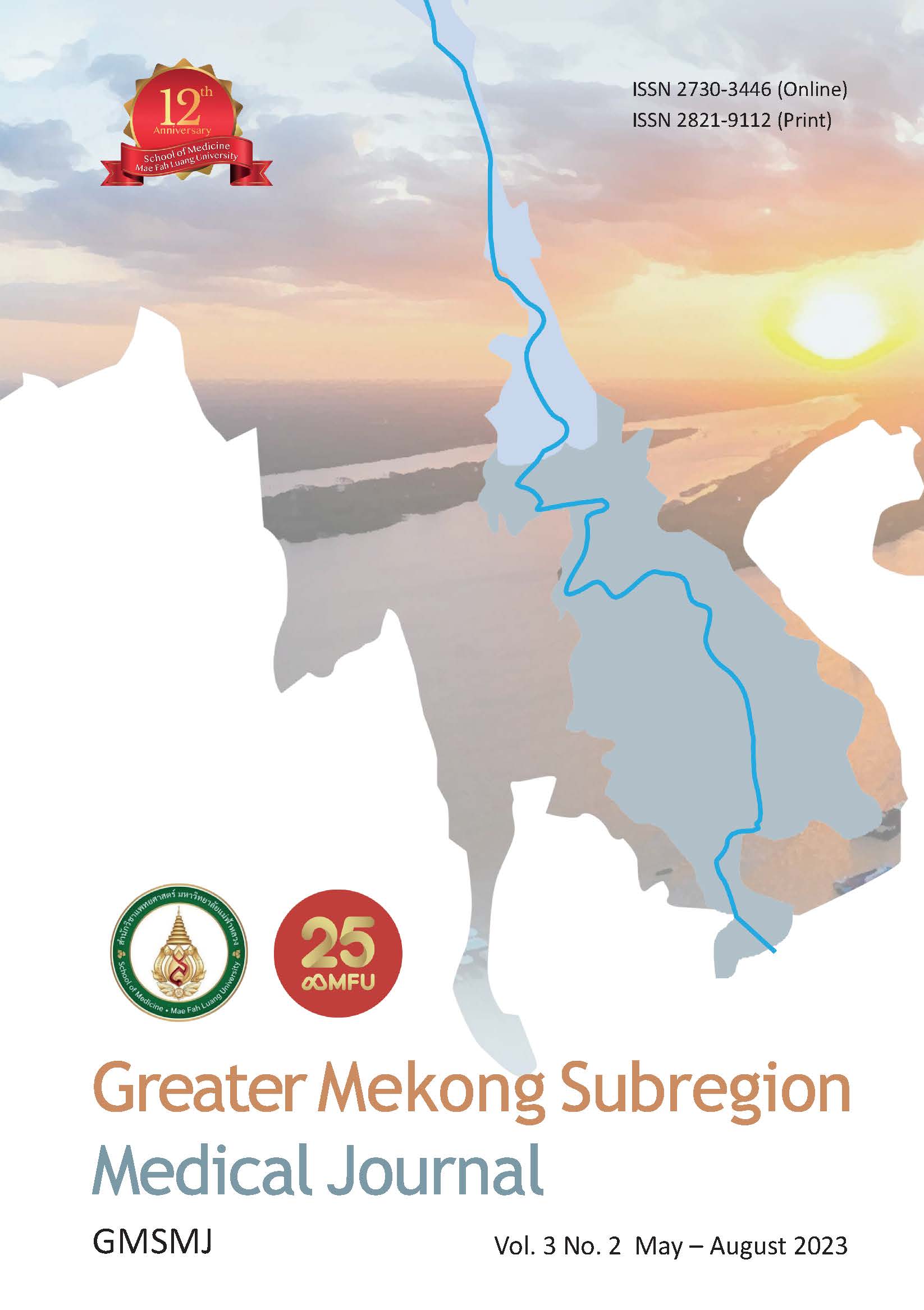Fabrication and Characterization of Ready-Use Artificial Skull
Keywords:
Artificial skull, Hydroxyapatite, Cow bone, Plastic skullAbstract
Background: At present, medical care in Thailand is far advanced in all specialties. With this, we have to import large amount of high-cost medical equipment from other countries. However, there are many animal and plant products which can be modified and used for medical care.
Objective: This research aims to add value to Thailand’s agricultural products, including rice starch, rubber, and animal bones in Thailand by transforming these products into medical devices, namely artificial skull for the Thai people.
Materials and method: By using green technology, which is to use chemicals that are not toxic to the environment and humans to prepare pure medical cow bone implants in the human body. Heating to remove contaminants and crushing, casting, and sintering. Increasing toughness by coating with rice starch and additives. Artificial skull prototype fabricated based on fresh cow bone in Thailand was made.
Result: Artificial skull was made which consists of 75% by weight cow bone powder and binder which is composed of 80% by weight rice starch and 20% by weight filler, representing 25% for forming. Biocompatibility with the living body and highly responsive to the growth of human bone tissue. The samples had a maximum degree of swelling in the water of 23% after 2 hours becoming stable.
Conclusion: This simple green technology was friendly to the environment and human. This method could make value-added agricultural products for medical material. For this reason, trade deficit to the country could be decreased.
References
https://www.krungsri.com/th/research/ industry/industry-outlook/Other- Industries/Medical-Devices/IO/ medical-devices.
file:///C:/Users/smart815/Videos/ Downloads/abcjournal,+Journal+ manager,+126-138.pdf.
http://medicaldevices.oie.go.th/Article. aspx?aid=10304.
Bao CY, Zhang YZ, Wang HL, Luo JM, Tan YF, Fan HS, Zhang XD. Stress Analysis and Optimizing of Osteoinductive Ca-P Ceramics and Net-Cage-Structured Titanium Alloy in Dog Segmental Femoral Defect Reparation. Key Eng Mater. 2006; 309: 231-4. https://doi.org/10.4028/www.scientific.net/KEM.309-311.231
Deng C, Weng J, Cheng QY, Zhou SB, Lu X, Wan JX, Qu SX, Feng B, Li XH. Choice of dispersants for the nanoapatite filler of polylactide-matrix composite biomaterial. Curr. Appl. Phys. 2007; 7: 679-82. https://doi.org/10.1016/j.cap.2007.03.005
Ooi CY, Hamdi M, Ramesh S. Properties of hydroxyapatite produced by annealing of bovine bone, Ceram. Int. 2007; 33: 1171-7. https://doi.org/10.1016/j.ceramint.2006.04.001
Balamurugan A, Kannan S, Rajeswari S. Bioactivesol-gel hydroxyapatite surface for biomedical applicationinvitro study, Trends Biomater. Artif. Organs. 2002; 16: 18-21.
Sivakumar M, Kumar TSS, Shantha KL. Rao KP, Development of hydroxyapatite derived from Indian coral. Biomaterials.1996; 17:1709-14. https://doi.org/10.1016/0142-9612(96)87651-4
Shi D, Jaing G, Wen X. Invitro bioactive behavior of hydroxyapatitecoated porous Al2O3. J. Biomed. Mater. Res. 2000; 53: 457-66. https://doi.org/10.1002/1097-4636(200009)53:5<457::AID-JBM3>3.0.CO;2-2
Sasikumar S, Vijayaraghavan R. Low temperature synthesis of nanocrystalline hydroxyapatite from eggshells by combustion method, Biomater. Artif. Organs. 2006; 19: 70-6.
Kokubo T, Takadama H. How useful is SB Fin predicting in vivo bone bioactivity? Biomaterials. 2006; 27: 2907-15. https://doi.org/10.1016/j.biomaterials.2006.01.017
Vongsurakrai V, Varavini S. Product of Spray Dried Rice Starch (Era-Tab ®) and Its Utilization in Pharmaceutical Industry, Adv. Mater. Res. 2010; 93-94: 672-4. https://doi.org/10.4028/www.scientific.net/AMR.93-94.672
Halajan M, Torkamany M, Dorranian D. Effects of the ZnSe concentration on the structural and optical properties of ZnSe/PVA nanocomposite thin film. J. Phys. and Chem. Solid. 2014; 75: 1187-93. https://doi.org/10.1016/j.jpcs.2014.05.007
Sivakumar M, Kumar TSS, Shantha KL, Rao KP. Development of hydroxyapatite derived from Indian coral. Biomaterials. 1996; 17: 1709-14. https://doi.org/10.1016/0142-9612(96)87651-4
Phuendee M, Jarupoom M, Leksakul K, Sroykeaw J, Khumpa S. To Study and Apply of Rapid Prototyping for Developing Artificial Tibia and Skull Part. Presented in the Industrial Engineering Conference on 17-19 October 2012 at Cha-am, Petchaburi, Thailand.
ASTM F1581-08R20. Standard Specification for Composition of Anorganic Bone for Surgical Implants, West Conshohocken, PA, USA, 1-4.
Chaudhary A, Sinha VD, Chopra S, Shekhawat J, Jain G. Low-Cost Customized Cranioplasty with Polymethyl Methacrylate Using 3D Printer Generated Mold: An Institutional Experience and Review of Literature. Indian Journal of Neurotrauma. 2021; 18 (2): 99-104. DOI: 10.1055/s-0041-1729679. https://doi.org/10.1055/s-0041-1729679
Downloads
Published
How to Cite
Issue
Section
License

This work is licensed under a Creative Commons Attribution-NonCommercial-NoDerivatives 4.0 International License.






